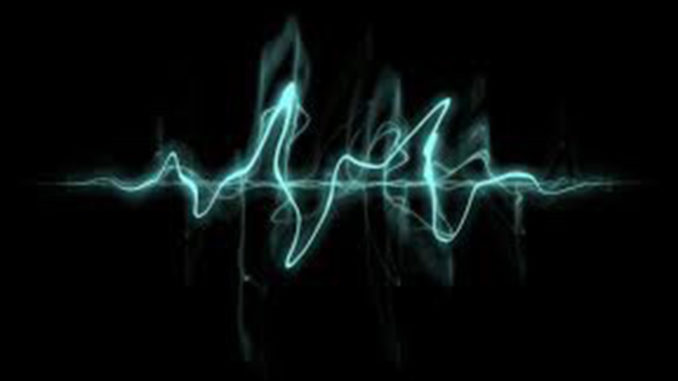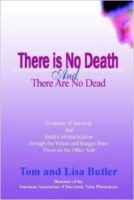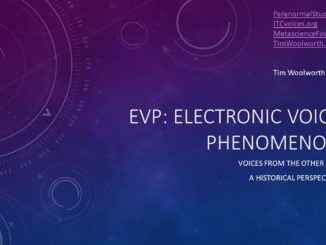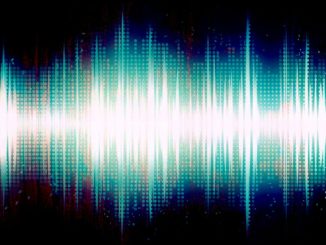
The Association Transcommunication (ATransC, formerly the American Association of EVP or AA-EVP) has been the go-to English language source for information regarding EVP since it was founded by the late Sara Estep in 1982 and directorship was taken over by Tom and Lisa Butler in 2000. Over the years, ATransC has hosted several experiments, written several white papers on ITC and began the Big Circle EVP experiment which is still practiced worldwide.

Association Transcommunication has observed several EVP (electronic voice phenomenon) characteristics throughout years of observation and experimentation. These characteristics are verbatim and excerpted from the book There is No Death and There are No Dead authored by both Tom and Lisa Butler. We chose this excerpt because it distills the entirety of EVP as a study into a handful of salient points. These points are located in the book starting on page 202 and carry through to page 210. We highly recommend you buy this book as it should be in the library of every ghost hunter, ITC practitioner, paranormal enthusiast and anyone who has questions about persistence of consciousness or life after death.
In the following excerpt, the page numbers upon which the text appears in There is No Death and There are No Dead will be in parenthesis and we begin on page 202:
Characteristics of EVP
By definition, EVP are unexplained voices that are collected onto digital and analog recording medium and that are not explained by currently known physical principles. They appear to be ubiquitous in that experimenters around the world are able to collect them with just about anything that will record human voice frequencies and under just about any recording circumstances. They often vary in nature as the experimenter, recording environment and technique is changed. English speaking people tend to collect English EVP phrases. Multilingual people often collect EVP in a mixture of the languages that they speak. People who have a strong music background often record phrases that are sung, rather than spoken.
The following list of characteristics will provide a sense of how EVP sounds and the nature of the phenomenal voices.
1. EVP are Distinctive: EVP have a distinctive character of cadence, pitch, frequency, volume and use of background sound. The voices have a distinctive sound to them that is difficult to describe. For instance, EVP messages often have an unusual speed of enunciation; the words seem to be spoken more quickly than normal human speech. Regarding this peculiarity, Konstantinos wrote, “The best way I can describe it is that it’s almost as if each word is spoken quickly, yet the pauses between the words are of a natural length. The combination of these two speed factors makes for the peculiar rhythm and perceived speed.” You may also notice that the paranormal voices often have a hollow and/or monotone quality.
2. Frequency Range: EVP are sometimes received at higher or lower time-base than normal speech. The enunciation of words is not just faster, but the frequency range of the phrases is sometimes higher than normal human speech. Such recordings are typically adjusted up to plus or minus ten percent of the initial time-base (sped up or slowed down) during analysis to make them more understandable.
3. Missing Frequencies: Italian researcher, Paolo Presi, has reported that spectral analysis of EVP samples has shown that the fundamental frequencies of voice associated with the human voice box are sometimes missing in EVP. He describes the typical EVP as a “thickening” of the background noise to form the voice. It is noted by others that the wave form of an EVP tends to have a relatively slow “rise” and “fall” time, when compared to normal human speech.
4. Precursor Sounds: Sounds are often heard prior to an occurrence of EVP. Although these vary in nature, they tend to be within tenths of a second of a phrase and are a “popping” or “clicking” noise reminiscent of the “squelch” sound caused when an automatic gain control engages as the “push to talk” button is depressed on a Citizen’s Band radio. There are various ideas on what this sound may signify. The sound may be caused by a dimensional breakthrough and may be an artifact of spirit world energy entering the physical world. There is evidence that “Psychic Time” flows differently than “Physical Time” and so the noise may be caused by a shift in time as the two aspects of reality link up. Many researchers feel that the sound suggests that the communicating entity is using some form of mechanism to assist in communication.
As Dr. Ernst Senkowski described this aspect of EVP, “Several observations clearly show ‘carrier’ signals apparently following a remarkable reduction of the volume/noise coming from the radio receiver and starting with a sharp click like switching on. Afterwards, the receivers may be ‘dead’ form some time. So, in our system and with our words, we suppose someone transmitting signals which supermodulate our electromagnetic-acoustic field. In my view, this is a clear sign for a special ‘field’ not yet measured by our instruments but overlaying and (204) manipulating our space-time ‘reality’ which is tightly bound to certain functions of our mind-brain system.”

T-Shirts, Mugs and More!
We now have t-shirts, tarot decks, ESP cards, coffee mugs, face masks, and much more merchandise available for purchase. Every dollar spent helps fund Paranormal Study!
5. EVP Show Evidence of Being Limited by Available Energy: Alexander MacRae has noted that the utterances tend to have about the same amount of audio power in their associated sound wave from one EVP sample to another. That is, a short EVP will tend to be louder than a long EVP. A very long phrase might be composed of two or more average length phrases separated by minor pauses. Again, this is as if a communicating entity is attempting to manage available power as “packets” of sound or psi energy. The evidence is very strong that EVP are energy-limited phenomena. This question will be addressed later in this chapter.
6. EVP are Complete Words or Phrases: Researcher, Alexander MacRae, has also conducted considerable analysis of EVP messages, determining that a message is typically one to two seconds in duration and is not truncated at the beginning or end. If EVP were crosstalk, they would often begin in the middle of a word. EVP messages are usually complete thoughts, as well.
7. EVP are in the Language of the Experimenter: Alexander MacRae has conducted experiments in a place that has no English language radio or television stations, yet resulting EVP were in English, which is his primary language. It is typical for the EVP, no matter where they are recorded, to be in a language that the experimenter understands. There have been exceptions to this, but as a rule, experimenters will hear EVP in their native language, or a language in which they are conversant.
This brings up an interesting point of speculation about psi-based communication. Mental mediums often report that they receive communication from nonphysical entities as images they must interpret. These images are not just mental pictures. They are packets of information that are sufficiently complete for the receiver to fully understand their meaning. Robert Monroe referred to this form of communication as a, “Thought Balls.”
There are numerous reports of EVP that are apparently initiated by extraterrestrials. It seems safe to assume that extraterrestrials do not speak English. Is it possible that, in EVP, we have proof of the nature of telepathy? Are images the standard (205) mode of communication in nonphysical aspects of reality? If so, our Self/brain mechanism must be an effective translator of images into recognizable words in a language we understand.
8. EVP are not Ambient Sound or Broadcast Programming: Again, Alexander MacRae has made a contribution to the field of EVP by submitting the newest model of his Alpha Device for testing at the Institute of Noetic Sciences. The device produced EVP in a chamber that was shielded from both Radio Frequency (RF) and sound energy in the environment. This demonstration proving that EVP are not stray sounds or RF has been made before. One of the problems we have faced in the past is that “old proof” is often discounted because of the considerable improvement in instrumentation, experimental protocol and understanding of physical principles. In light of this, it is important that our modern generation of scientists is able to witness demonstrations that adhere to modern standards for research, such as that just provided by Alexander MacRae. As of the writing of this book, we await a response from the scientists.
9. EVP are Appropriate to the Circumstances: There are numerous examples of EVP that are clearly direct responses to questions recorded just prior to the EVP phrase or to the circumstances. As an example of EVP being appropriate to a circumstance, we were trying to figure out how to set up a new tape recorder while we were preparing to conduct an experiment. The tape recorder was finally set up correctly but not before causing a very loud feedback squeal that was recorded. On the recording a male voice said in a Class A EVP, “Leave it alone” right after the loud squeal. Considering the circumstances, we thought that to be good advice, as tinkering with the equipment had caused the noise and we had finally set it up correctly.
EVP can be obscure in meaning that, without a reference point as to the subject, the message may sound meaningful yet may not make any sense to the listener. If we had not recorded the squeal, therefore knowing what had just taken place, the EVP “Leave it alone” would have had little meaning for us.
10. Precognitive Responses: Interestingly, answers to questions may be recorded prior to the question being asked, so that the answer (206) as a phenomenal message is on the sound track followed by the experimenter asking the question. While time may be meaningful for us, our time may well be irrelevant to a nonphysical entity. Alternatively, the entity may be sensing what the experimenter is about to ask. The transcript of a telephone call in Chapter 8, which was provided by Sonia Rinaldi, includes several circumstances in which the entity answered a question before or while it was being asked.
11. EVP are Found by Playing the Soundtrack Backwards: One of the more bizarre characteristics of EVP is that it is possible to discover an EVP that seems to be garbled, but that makes perfect sense when the soundtrack is played in reverse. By this, we mean to say that the sound track is played so that the voice of the experimenter can be heard speaking backwards, but the EVP can be heard playing forwards.
As with the ability of communicating entities to anticipate questions by placing answers into recording media before the question is asked, the phenomenon of reverse track EVP provides important hints as to the nature of time.
12. Vocalized Questions Elicit more EVP: There is evidence that the communicating entities are able to read our thoughts, as in placing an answer on a recorder prior to our asking the question. However, experiments conducted by Alexander MacRae have shown that EVP responses increase when questions are asked out loud. MacRae conducted a simple experiment during which he ran numerous sessions and did not verbalize questions, and then the same number of sessions speaking the questions. He then counted the number of EVP responses. On the nonverbalized sessions, he collected 3.2 utterances per session, while as on the verbalized sessions he collected 5.3 utterances per session.
13. The Voices in EVP are often Recognizable: If you have ever felt that EVP experimenters are mistaking stray radio broadcasts for phenomena, you should know that it is common for an EVP to contain the recognizable voice of a deceased person. It is also common for that entity to say something that was typical of what they would say when in the physical. Their personality clearly (207) remains intact even though they no longer have a physical body. There are just too many reports of a loved one’s voice being recognizable to ignore this fact, even after they have been on the other side for many years.
14. Mundane Voice are Sometimes Transfigured: A communicating entity will sometimes remodulate or transfigure the experimenter’s words into EVP. In one striking example, the words of a French speaking radio announcer were changed, mid-sentence, into an English spoken EVP. The EVP was clearly inappropriate for what the announcer had been saying. By the way, here we use the term “transfigured” in much the same way that it was used in mediumship to describe how an entity transfigures or changes the medium’s features into the entity’s likeness. Many successful experimenters use a foreign language radio station or recording for background noise and have great success in receiving loud messages in their own language.
15. Party Line: Some EVP sound as if they are comments intended for someone other than the experimenter. This is much like momentarily listening in on a party line telephone call. It is not uncommon in both field and controlled recording situations to record comments that seem as if unseen people are discussing the experimenter’s actions in much the same way that you might discuss the activity of someone that you were watching.
16. A Need for Background Sound Sources: As has been noted, sound energy is often provided during EVP experiments in controlled situations. It is felt that the internal noise in IC recorders is used by the communicating entities to form EVP in lieu of supplied background sound. The conclusion is that communicating entities require such sound energy as raw material to generate EVP. As it is noted in Item 4, there is also evidence that background sound energy is “collected” prior to an EVP, as if the words are being “burst” transmitted after sufficient energy has been accumulated. In the same way, EVP may trail off or become garbled near the end, as if available energy is being rapidly depleted.
17. Recording Media Stability: It has been reported that EVP messages stored on audio tape will sometimes change over time. For (208) instance, an experimenter notes the presence of an EVP in his or her log book, but on later examination of the recording find the message changed or no longer present. So far we have not heard that EVP recorded on compact disc has changed. Some researchers have said that audio tape will degrade over time and should be re-recorded after several years. Interestingly, copying an audiotape is apt to contaminate it with new EVP.
18. Layered EVP: Experimenters often complain about having several layers of EVP in the same location of the recording media. This is especially common when more than one background sound source is used during an experiment. For instance, if a fan and radio static is used for background sound, a message might be found in the fan noise and a second message might be found in the radio static – both in the same segment of sound track. This is one of the reasons we say that there is something of a “learning curve” for learning how to hear Class C and Class B EVP. To detect every last EVP, you must learn to selectively listen to each contributing sound on the track if you wish.
19. The “Newness” Effect: The experimenter’s excitement in trying a new detection device or recording technique may be the source of improved EVP collection. As the new approach becomes “normal operating procedure,” the improvements generally fade back to to a more “normal” frequency and quality of EVP collection. This suggests that it is important for the experimenter to maintain peaked interest during experiments. This is also one of the reasons we believe that the experimenter is an integral part of the recording circuit. The experimenter is clearly supplying the necessary psi energy to enable a nonphysical to physical transfer of energy.
20. Effective Devices Unique to the Experimenter: Exceptionally effective EVP and ITC collecting systems have been developed; however, these typically work well for the developer, but do not work as well for other experimenters. This paradox supports the belief that the experimenter is part of the recording circuit. It has also reinforced the concept that the communicating entity may be specific to the experimenter.
(209) Because various devices and equipment setups have worked exceptionally well for one experimenter and not for another, it has been argued that it is a waste of time to try to develop the hoped for equipment that will become the proverbial “spirit telephone” that anyone would be able to use to call up his or her loved one on the other side. This may prove to be the wrong assumption. There is growing evidence that people who had not been able to record EVP with a cassette recorder are now doing so on IC recorders, and people who have recorded mostly Class C and B EVP are now collecting many Class A voices using this type of recorder. This argues that technological improvements are possible for EVP.
It is reasonable to expect that the thousands of hours spent by EVP researchers around the world will result in new devices and techniques. Such advances, teamed with our growing understanding of these phenomena, should assure that better and more meaningful EVP and ITC collection will be possible in the future. Nevertheless, the attitude of the experimenter seems to be the dominant success factor and the quality of a particular device is less important than how and by whom the device is used.
21. EVP can be Thoughts of Living People: There have been a number of well designed experiments that appear to have resulted in EVP initiated by living people who were sleeping at the time. As an ethical consideration, such experiments are always prearranged with the person who volunteers to be the sleeping target. In these experiments, questions are clearly answered by a communicating entity, and the answers are appropriate for the sleeping person. This fact of EVP suggests the possibility that EVP can become an important tool for consciousness research. For instance, is it possible that a patient in a coma might initiate an EVP when requested? This fact also offers support for the Survival Hypothesis, in that it demonstrates that when Self is disentangled from the physical body, as in sleep or meditation, it is very much the same as a disincarnate entity. This is a prediction of the Survival Hypothesis.
Do not take the fact that living people can initiate an EVP to be the explanation for all EVP. The fact that a living person can initiate an EVP is something that must be expected if we are Self (210) in a physical body. When we physically “die,” we simply become disincarnate Self in an etheric body. When taken in the context of other evidence about EVP and the Survival Hypothesis, the fact that we can record thoughts of living people provides a substantiation of that other evidence.
If you found the content in this article to be of any value to your paranormal studies, please let us know in the comments below. Feel free to share this article with your friends as well because if you found it interesting, they might too.
Do You Want To Know More?
Our content creators also have podcasts that go much deeper into paranormal topics.
Tim Woolworth’s Walk in the Shadows, an episodic masterclass that consists of a deep dive into all things Fortean, paranormal and supernatural.
Rick Hale teams up with Stephen Lancaster in The Shadow Initiative where they explore various paranormal topics and discuss current paranormal news.
Please check these shows out and visit Paranormal Study social media to keep up to date on articles and all the things our authors are doing.




Be the first to comment